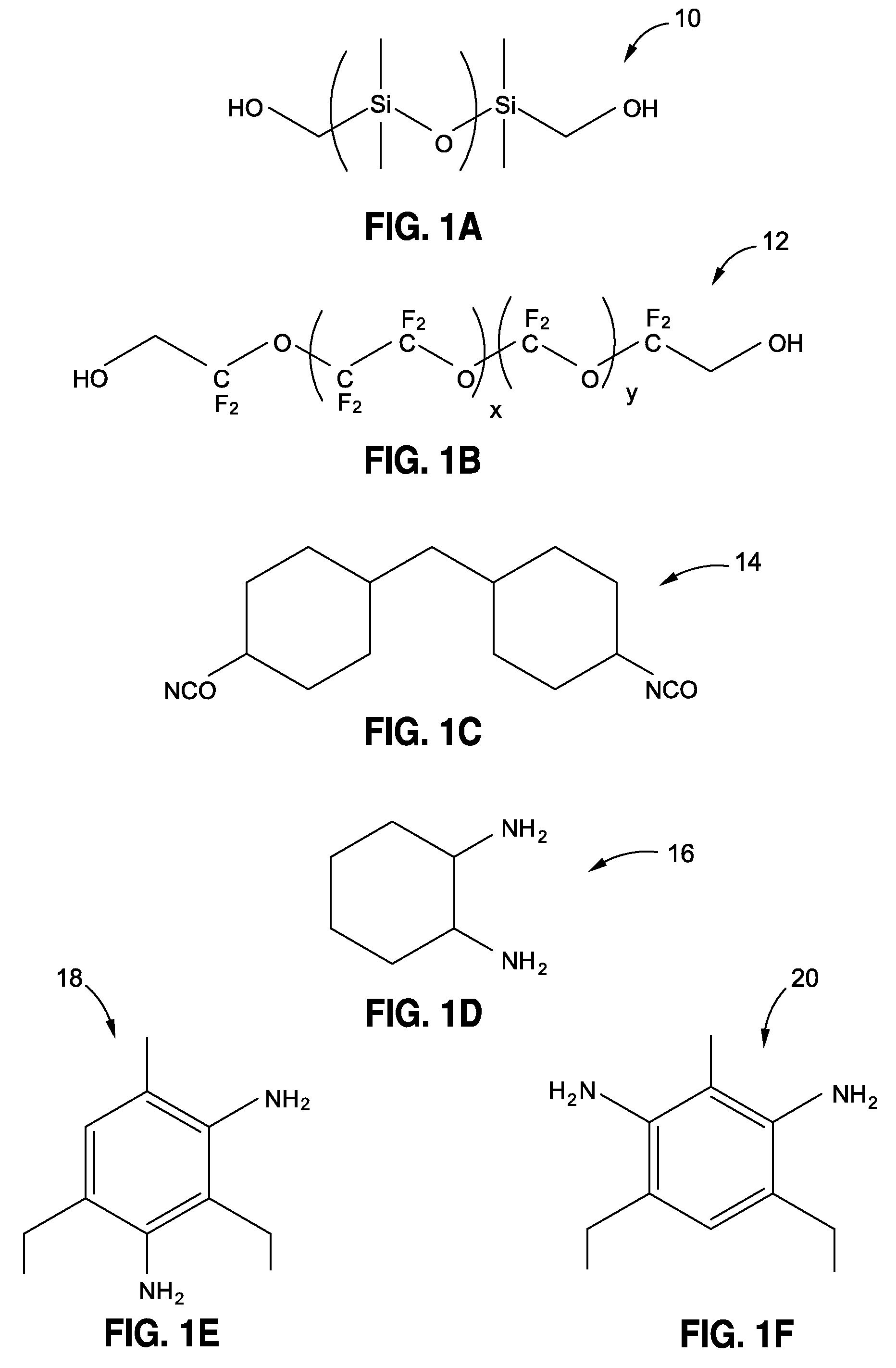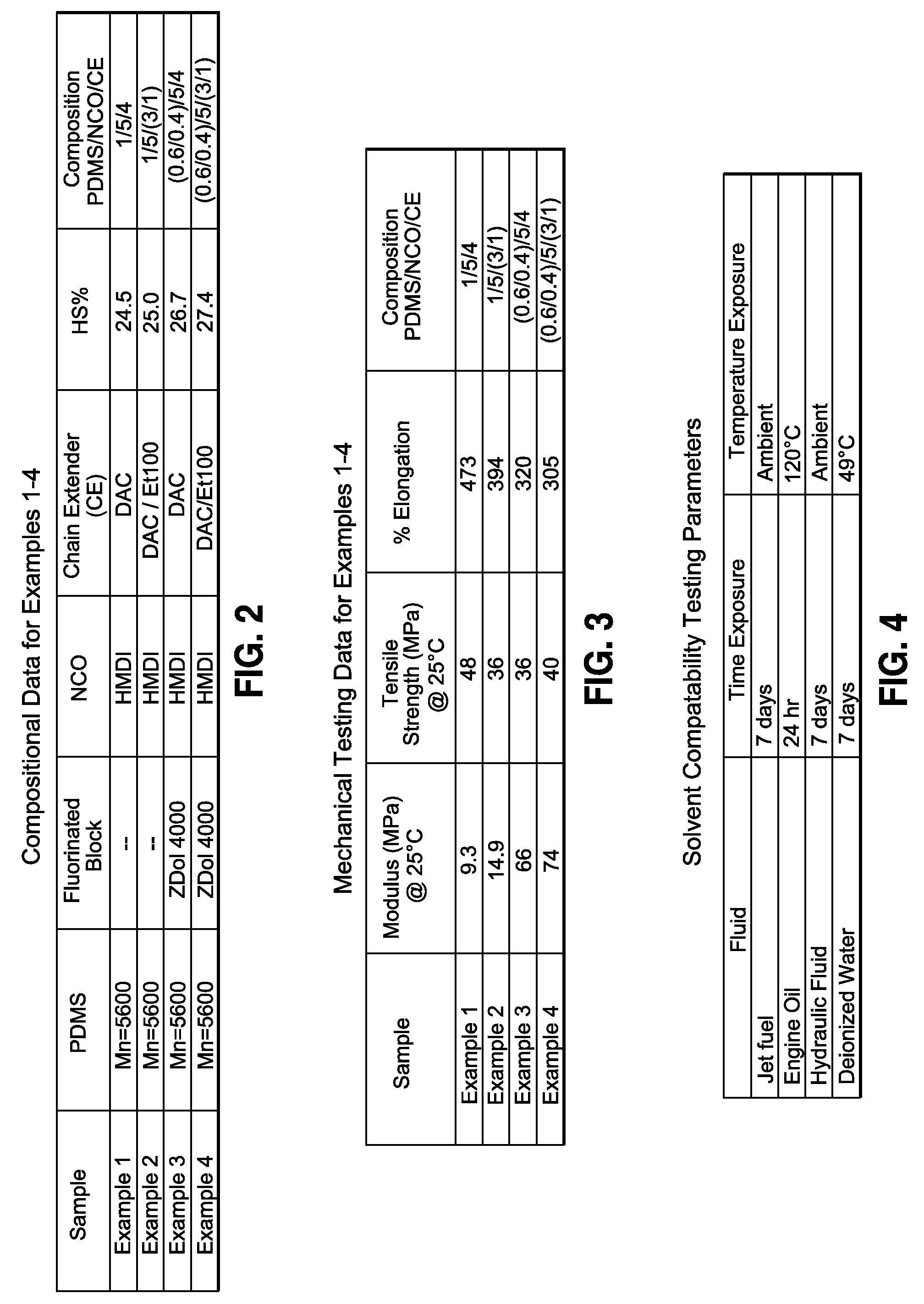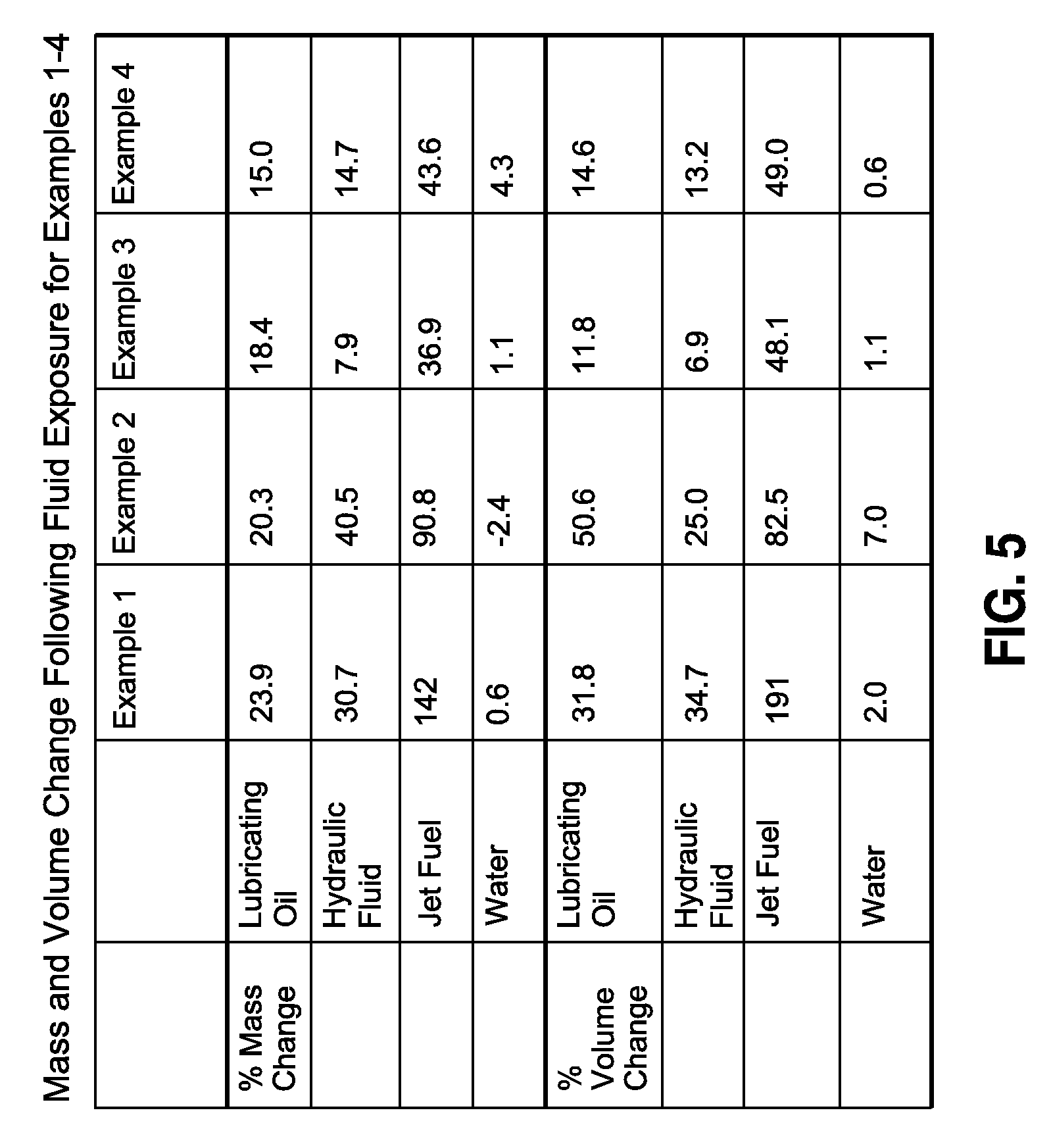Low temperature segmented copolymer compositions and methods
a copolymer and low temperature technology, applied in the field of segmented copolymer compositions, can solve the problems of reducing mechanical strength at low temperature, elastomers that are not maintained to maintain their advantageous elastic properties, and elastomers that are stiff and become brittl
- Summary
- Abstract
- Description
- Claims
- Application Information
AI Technical Summary
Benefits of technology
Problems solved by technology
Method used
Image
Examples
example 1
[0062]In Example 1, PDMS (5.0 g (grams), 0.893 mmoles (millimoles)) and HMDI (1.17 g, 4.46 mmoles) were charged to a vial and stirred with heating at 90° C. until the mixture turned clear (typically 1-2 (one to two) hours) and then was heated for 3 (three) hours more at 90° C. The mixture was then cooled to ambient temperature. Isopropanol (8 g) was added to the mixture and stirred until the mixture was homogeneous. In a separate vial, DAC was measured (407 mg (milligrams), 3.57 mmoles) and dissolved in isopropanol (2 g). These two solutions were combined and vigorously mixed. After approximately 5 (five) minutes, the solution was poured into a 3 inch by 3 inch PTFE mold and covered overnight. The isopropanol was then removed through evaporation to produce a film (approximately 0.5 mm (millimeters) thick) for use in mechanical testing.
example 2
[0063]In Example 2, PDMS (5.0 g, 0.893 mmoles) and HMDI (1.17 g, 4.46 mmoles) were charged to a vial and stirred with heating at 90° C. until the mixture turned clear (typically 1-2 (one to two) hours) and then was heated for 3 (three) hours more at 90° C. The mixture was then cooled to ambient temperature. Isopropanol (6 g) was added to the mixture and stirred until the mixture was homogeneous. In a separate vial, DAC (305 mg, 2.68 mmoles) and ETHACURE 100 (159 mg, 0.893 mmoles) were dissolved in isopropanol (2 g). These two solutions were combined and vigorously mixed. After approximately 5 (five) minutes, the solution was poured into a 3 inch by 3 inch PTFE mold and covered overnight. The isopropanol was then removed through evaporation to produce a film (approximately 0.5 mm thick) for use in mechanical testing.
example 3
[0064]In Example 3, PDMS (3.5 g, 0.625 mmoles) and HMDI (1.36 g, 5.2 mmoles) were charged to a vial and stirred. An aliquot of triethylamine (approximately 10 uL (microliters)) was added via capillary tube and the solution was stirred with heating at 90° C. for 3 (three) hours. α,ω dihydroxy fluoroether (FOMBLIN ZDol 4000) was then added (1.67 g, 0.417 mmoles) and the mixture stirred for 3 (three) more hours at 90° C. The mixture had a turbid appearance upon addition of the fluoroether. The mixture was then cooled to ambient temperature. Isopropanol (8 g) was added to the mixture and stirred until the mixture was homogeneous. In a separate vial, DAC was measured (474 mg, 4.16 mmoles) and dissolved in isopropanol (2 g). These two solutions were combined and vigorously mixed. After approximately 5 (five) minutes, the solution was poured into a 3 inch by 3 inch PTFE mold and covered overnight. The isopropanol was then removed through evaporation to produce a film (approximately 0.5 mm ...
PUM
| Property | Measurement | Unit |
|---|---|---|
| Temperature | aaaaa | aaaaa |
| Temperature | aaaaa | aaaaa |
| Temperature | aaaaa | aaaaa |
Abstract
Description
Claims
Application Information
 Login to View More
Login to View More - R&D
- Intellectual Property
- Life Sciences
- Materials
- Tech Scout
- Unparalleled Data Quality
- Higher Quality Content
- 60% Fewer Hallucinations
Browse by: Latest US Patents, China's latest patents, Technical Efficacy Thesaurus, Application Domain, Technology Topic, Popular Technical Reports.
© 2025 PatSnap. All rights reserved.Legal|Privacy policy|Modern Slavery Act Transparency Statement|Sitemap|About US| Contact US: help@patsnap.com



